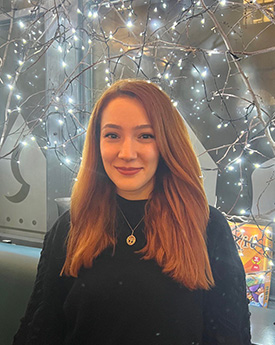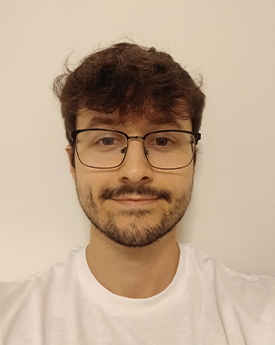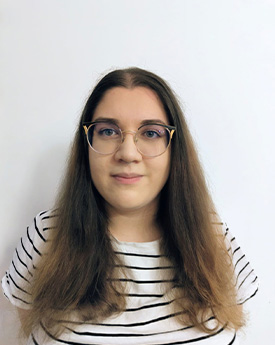Professor Manus Hayne SFHEA
ProfessorProfile
My research interests are in the physics of low-dimensional semiconductor nanostructures (quantum wells, wires and dots) and its exploitation in the development of novel devices. I collaborate with many UK and European universities, research institutes and companies.
Research Interests
ULTRARAM™ is a novel, compound semiconductor, charge-storage memory that combines the speed and endurance of dynamic random access memory (DRAM) with the non-volatility of flash. With its extremely low switching energy, ULTRARAM™ is ultra-efficient, making it a strong candidate for so-called universal memory. At the core of ULTRARAM™ is a patented triple-barrier resonant tunnelling barrier that exploits quantum effects to allow it to switch from opaque to transparent to electrons on application of a small voltage. This gives ULTRARAM™ its contradictory property of being able to easily change robustly stored data.
Self-assembled GaSb quantum rings (QRs) are type-II compound semiconductor nanostructures that form a deep potential well for positive charge (holes) but expel electrons, such that they form a system analogous to an atom, with a positively-charged ‘nucleus’ to which electrons are electrostatically bound. After more than two decades studying the physics of GaSb QRs, current activities are focused on their exploitation in telecoms-wavelength LEDs, single photon LEDS
Research Overview
My research interests are in the physics and applications of low-dimensional semiconductor nanostructures (quantum wells, wires and dots). I collaborate with many UK and European universities, research institutes and companies.
Career Details
I studied at the University of Southampton and did a PhD and a postdoc at the University of Exeter, before moving to the European mainland. There I briefly worked in Paris, and then at the KU Leuven, Belgium for nearly 10 years, where I investigated semiconductor nanostructures in very high magnetic fields (up to 50 T). I returned to the UK to join the Physics Department in Lancaster in June 2006.
PhD Supervision Interests
Two projects are available. (1) Universal memory combines the best features of DRAM and flash, i.e. is non-volatile, low-voltage, non-destructively read, fast, cheap and high endurance. We recently demonstrated novel III-V compound semiconductor candidate universal memory cells (ULTRARAM), and research is rapidly progressing towards device scaling, fabrication of small arrays and implementation on Si substrates. The objective of this project is to develop and implement the III-V CMOS logic that will enable addressing of bits in large arrays (up to 1 Mbit). It will be suitable for someone with an interest in semiconductor device physics or electronic engineering. (2) VCSELs were recently used for 3D sensing in smartphones. 'Eye-safe’ VCSELs that emit above 1400 nm are preferred, but, all production VCSELs, including those in smartphones, lase below 1000 nm. The project will develop 1400 to 1600 nm VCSELs, based on our patented GaSb quantum ring technology.
Scaling ULTRARAM’ EPSRC CASE PhD studentship
01/10/2025 → 30/09/2029
Research
ULTRARAM - Neuromorphic memory for AI applications
01/09/2025 → 28/02/2026
Research
Industrial Epitaxy of ULTRARAM Computer Memory
01/06/2024 → 31/05/2025
Research
Talent and Research Stabilisation Fund 2022 (Manus Hayne)
21/11/2022 → 31/03/2023
Research
MSI: Ultralow-power, Non-volatile, Random Access Memory Arrays for Data centers and Space Applications (ULTRARAM)
01/06/2022 → 30/06/2025
Research
MSI: Ultralow-power, Non-volatile, Random Access Memory Arrays for Data centers and Space Applications (ULTRARAM)
01/05/2022 → 30/06/2024
Research
MC: QUANTIMONY
01/12/2020 → 30/11/2024
Research
iCASE: Long wavelength (>1400 nm) GaSb quantum ring VCSELs for consumer applications
01/09/2020 → 31/08/2024
Research
Atomic Layer Deposition for Lancaster Quantum Technology Centre Cleanroom
29/11/2019 → 28/05/2021
Research
MSI: Continuation Study of Compound Semiconductor Non-volatile RAM Manufacture on Si Substrates
01/10/2019 → 30/06/2022
Research
IAA Huawei: ULTRARAM Arrays
01/09/2019 → 30/09/2020
Research
MSI: H2020: Ultra-low-power NVRAM for Internet-of-Things Sensors
20/05/2019 → 31/10/2020
Research
MSI: Feasibility of Compound Semiconductor Non-volatile RAM Manufacture on Si Substrates
01/08/2018 → 14/02/2019
Research
Ultra-low energy, non-volatile, random access memory
04/04/2018 → 30/04/2019
Research
Self assembled GaSb/GaAs quantum dots and rings for light-emitting devices
01/10/2016 → 31/03/2020
Research
IQE - IAA
01/05/2016 → 31/07/2018
Research
Lancaster Chemistry Academia-Industry Symposium
Symposium
Meeting with Eco-Nova
Types of Business and Community - Hosting of external, non-academic visitor
Quantum Nanotechnology
Quantum Nanotechnology
Quantum Nanotechnology
Quantum Nanotechnology
- Energy Lancaster
- Quantum Nanotechnology
- Quantum Technology Centre





